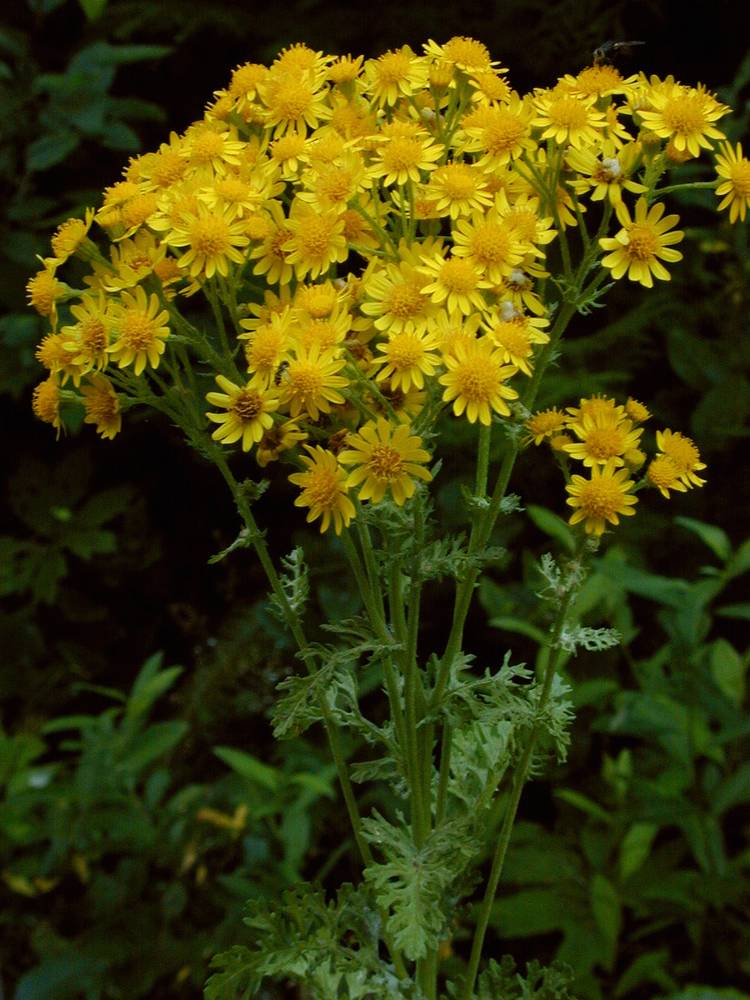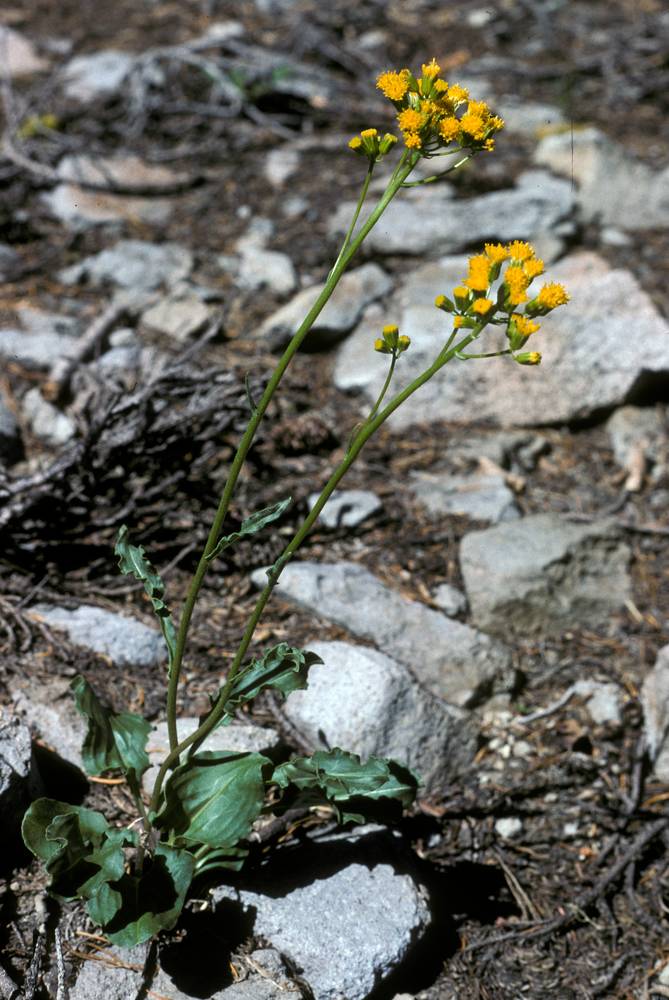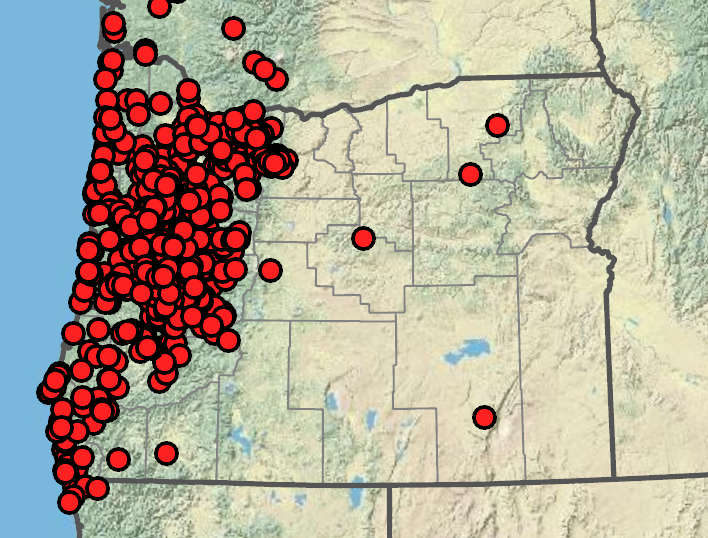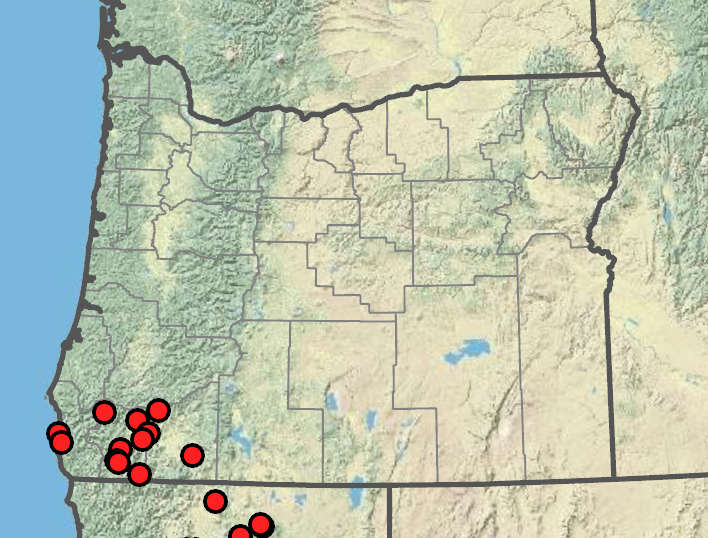Senecio jacobaea
Senecio aronicoides
stinking willie, tansy ragwort
rayless groundsel, rayless ragwort
1, or rarely 2–4 and loosely clustered, often purple-tinged, sparsely and unevenly tomentose.
1, sparsely and loosely to finely arachnoid-tomentose, becoming unevenly glabrate.
basal usually withering before flowering;
cauline ± evenly distributed along stems;
distal slightly smaller; ovate to broadly ovate, bases tapered, usually 1–3-pinnate, ultimate margins dentate;
lobes obovate to spatulate, petiolate.
basal and proximal cauline ovate to oblanceolate, bases tapering;
margins denticulate or sharply toothed to subentire; middle and distal cauline smaller, sessile and weakly clasping.
compound corymb-like arrays;
bracts conspicuous but small.
corymb-like arrays;
bracts 2–3 mm, conspicuous.
widely cylindric or urn-shaped.
campanulate.
~13;
rays 8–12 mm.
0(1–2);
rays 4–7 mm.
60–70+.
40–75+.
13, 3–4(5);
tips black or dark green.
8 or 13, 4–8 mm, green, often with black tips;
surfaces glabrous to sparsely and irregularly tomentose.
2–6 bractlets, inconspicuous, usually < 2 mm.
0 or 1–3+ oblong to linear bractlets.
0.75–1.3 mm, sparsely hairy or glabrous.
1.5–2.5 mm, glabrous.
(10)20–60+.
(6)15–30+.
=40.
=40.
Senecio jacobaea
Senecio aronicoides
Disturbed areas, pastures, roadsides. Flowering May–Sep. 0–1600 m. Casc, CR, Est, Sisk, WV. CA, ID, WA; north to British Columbia, northeast to MT, northeastern North America; Europe. Exotic.
Senecio jacobea is an introduced weed, originally from Europe. It establishes in places with cool, wet summers and is particularly toxic to livestock. In most states where it occurs, this species has been declared a noxious weed.
Open woodlands, foothills, montane forests. Flowering May–Jul. 900–1800 m. Sisk. CA. Native.
Debra Trock
Debra Trock
- Local floras:
BC,
CA,
OR,
WA
- Local Web sites:
CalFlora,
CalPhotos,
Flora NW,
PNW Herbaria,
Turner Photog.
WildflowerSearch
iNaturalist (observations)
USDA Plants Database
- LBJ Wildflower Center
- SEINet
- Plants of the World Online
- Encyclopedia of Life
- Wikipedia
- Google Image Search





